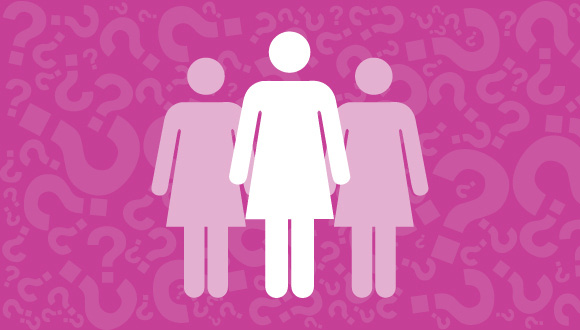All women are at risk for breast cancer, and risk increases with age. Knowing about breast cancer can help a woman detect problems early, when chances of a cure are greatest.
“You are the first line of defense when it comes to breast cancer. That’s why it’s crucial to know how your breasts normally look and feel, and let your doctor know if something seems unusual,” says Dr. Esther Dubrovsky, breast surgeon at Houston Methodist Cancer Center.
1. Knowing the warning signs of breast cancer is vital
If you know the warning signs of breast cancer, you’ll be better equipped to recognize if it’s time to alert your doctor. (Related: Breast Self-Exams & How to Do Them)
Breast cancer symptoms include:
- A painless lump or mass in (or near) the breast
- A change in breast size or firmness
- Breast skin changes, such as dimpling, a sore or a rash
- Nipple itching, burning, rash, turning inward or discharge
- A warm area in the breast
- Pain in the breast
- Swelling under the armpit or of the arm
You should see your doctor if you experience any of these symptoms, but keep in mind that most breast lumps aren’t cancer.
2. The earlier breast cancer is detected, the better the outcome
Early detection means a better chance of a cure, and screenings are essential to early breast cancer detection.
Women in their 20s and 30s should have clinical breast examinations during their yearly physical exam, and at age 40 women should begin having an annual mammogram. (Related: Who Needs Breast Cancer Screening Before Age 40?)
“Screening mammograms are catching cancers at very early stages, and it’s common to identify cancers that are still confined to the ducts. These cancer cells have not had a chance to break out of the ducts and invade the surrounding breast tissue,” Dr. Dubrovsky says.
In fact, mammograms can detect breast cancer up to two years before a lump can be felt.
Because of early detection, as well as improvements in the way breast cancer is treated, 90% of women with breast cancer are alive five years after their diagnosis.
3. There are several types of breast cancer
Many women think of breast cancer as a single disease. In fact, there are many different types of breast cancer.
“Breast cancer is classified based on where in the breast it arises from. The most common place for cancer to start is in the ducts of the breast,” says Dr. Dubrovsky.
The milk ducts of the breast are tubes that carry milk from the milk-producing glands (lobules) to the nipple.
Breast cancers that start in the milk ducts are called ductal carcinomas, while breast cancers that start in the lobules are called lobular carcinomas.
4. Breast cancer can be invasive or noninvasive
“Noninvasive cancer that is confined to the ducts of the breast is called ductal carcinoma in situ, or DCIS, and is considered stage 0 breast cancer,” says Dr. Dubrovsky. Noninvasive breast cancers rarely cause symptoms or lumps you can feel, but they may appear as tiny areas of calcification (tiny flecks of calcium) on a mammogram.
“Breast cancer is classified as invasive if it has grown outside the duct or lobule where it started and into surrounding breast tissue, explains Dr. Dubrovsky. “It then has the potential to spread to other areas of the body.”
About 80% of breast cancers are invasive ductal carcinomas (IDCs). IDC appears as a hard, firm lump. In advanced stages of IDC, the skin over the lump may appear dimpled or the nipple may be retracted (pulled inward).
About 12% of breast cancers are invasive lobular carcinomas (ILCs). Rather than appearing as a hard lump, this cancer may feel like a thickening. ILC may be more difficult to detect on a mammogram than IDC.






